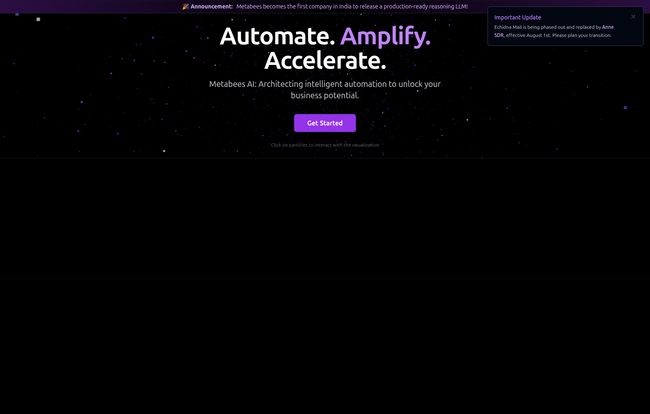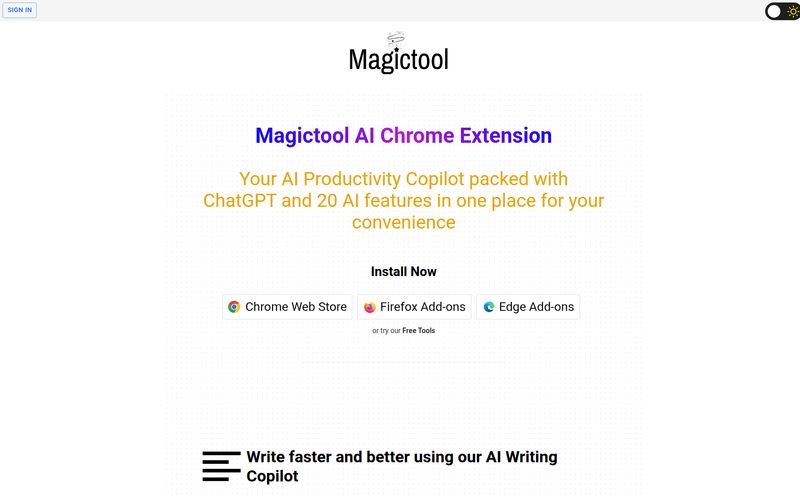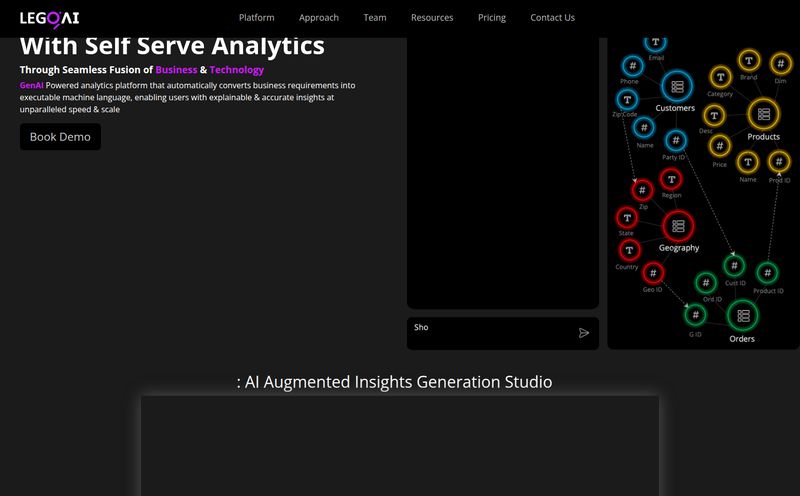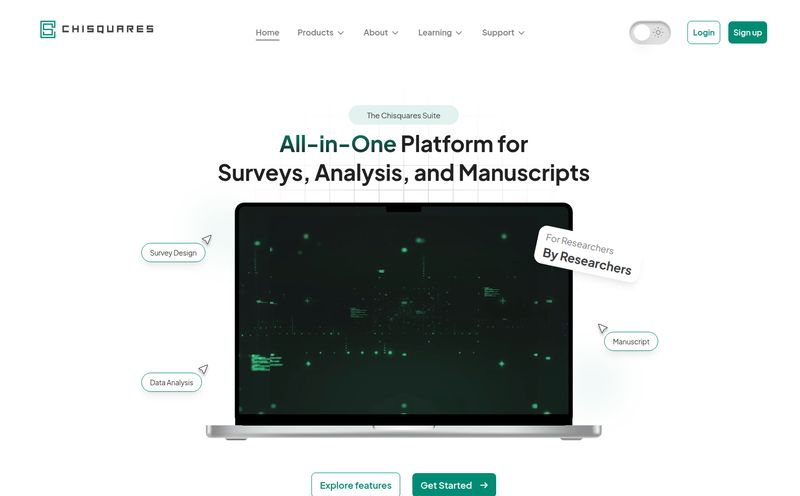I still get a cold sweat thinking about “Project Firefly.” It was a few years back. A feature I was convinced our users would love. I championed it, I pushed for it, my team spent an entire quarter building it. We launched. And then… crickets. That deafening silence of a product feature nobody wants.
We’ve all been there, right? Pouring your heart, soul, and a significant chunk of the budget into an idea based on a gut feeling, only to see it flop. It’s the single biggest fear for anyone in product development, from a solo founder to a senior PM at a huge company. What if there was a way to stress-test that gut feeling? To get real data on your idea before you write a single line of code?
Well, I stumbled across a tool that promises just that. It’s called Redstone AI, and after playing around with it for a week, I’m both incredibly excited and slightly terrified at how much of my past work it might have invalidated. Let's get into it.
So, What on Earth is Redstone AI?
In a sea of AI tools that just write blog posts or create weird-looking cat pictures, Redstone AI is refreshingly different. Created by the team at Metabees AI Labs, this isn't another GPT wrapper. Think of it more like a crystal ball for product managers. It's a specialized product validation suite designed to help you stop guessing and start knowing what your customers actually want.
It boils down to two core, and frankly, very clever tools:
- Review Analysis: This sifts through mountains of customer reviews to find the gold.
- AI Personas: This lets you build a virtual customer and test your ideas on them directly.
The whole point is to move faster, build with more confidence, and dramatically lower the risk of another “Project Firefly” incident. I’m listening.
A Closer Look at the Features
Let's pop the hood and see how these tools actually work. Because the concept is cool, but execution is everything.
The AI Review Analysis: Your Tireless Research Intern
Imagine telling an intern to read 2,000 reviews for a competitor’s product on G2 and come back with a summary of the most common complaints and feature requests. You’d get a half-baked spreadsheet three weeks later. Maybe.
The Review Analysis tool in Redstone AI does this in minutes. You can point it at a product on a platform like the App Store, G2, Capterra, or just paste in a bunch of raw text. It then chews through all that unstructured data and spits out structured insights. We're talking about identifying top pain points, must-have features, and even the general sentiment of the users. It's an incredibly powerful way to get the lay of the land, understand market needs, or figure out why people are leaving your own product for a rival.
AI Personas: The On-Demand Focus Group
This is the part that feels like it’s straight out of a sci-fi movie. The AI Personas tool lets you simulate your target customer. You don’t just pick a name and a stock photo. You define their role, their goals, their primary frustrations, and the tasks they're trying to accomplish.

Visit Redstone AI
Once you’ve built your persona—let’s call her “Sarah, the Overwhelmed Small Business Owner”—you can have a conversation with her. You pitch your product idea, describe a new feature, or ask her what she thinks of your pricing. Sarah, powered by AI, will give you feedback based on the profile you created. It is, without a doubt, one of the wildest things I've seen. It’s a risk-free way to get instant feedback without the hassle and cost of organizing a real focus group. No more stale coffee and awkward silences.
Let's Get Real: A Practical Walkthrough
This all sounds great in theory. But how does it work in practice? Let's use a hypothetical. Say I want to create a new mobile app for podcast listeners that helps them discover new shows.
- Step 1: Spy on the Competition. I'd start by grabbing reviews for Spotify, Apple Podcasts, and Pocket Casts. I'd feed these into Redstone's Review Analysis tool. My goal is to find a common, unsolved problem. After a few minutes, the AI might tell me that a huge number of users complain about poor recommendation algorithms and the difficulty of sharing clips. Bingo.
- Step 2: Build My Ideal User. Now I'll create an AI Persona. I'll name him 'David,' a 35-year-old marketing manager who drives 45 minutes to work every day and is desperate for high-quality, niche marketing podcasts but is sick of getting the same mainstream recommendations.
- Step 3: The Pitch. I'd then 'talk' to David. "Hey David, I'm building a new podcast app. What if it had a feature that let you subscribe to specific topics instead of just shows, and it used AI to find guest appearances and discussions about that topic across the entire podcast ecosystem?"
- Step 4: The Feedback. David's AI might respond with something like, "That's interesting. How would it be better than just searching for a topic in Spotify? My main issue is relevance. I don't want more noise. Show me how you'll filter it."
Just like that, in less than an hour, I've gone from a vague idea to a specific, validated problem and have already received my first piece of critical feedback. That's powerful stuff.
The Good, The Bad, and The AI
No tool is a silver bullet. As much as I'm impressed with Redstone AI, it's important to be realistic. Here's my honest breakdown.
What I Genuinely Liked
The speed-to-insight is the biggest win. What used to take days or weeks of manual research can now be done in an afternoon. For startups, solo developers, and even agile teams in large corporations, this is a massive advantage. Being able to validate ideas with minimal risk before committing development resources is the holy grail of product management. And I love that it gives you data-driven talking points to justify your roadmap decisions to stakeholders. No more relying solely on “I have a good feeling about this.”
The Things to Be Cautious About
First off, the old saying holds true: garbage in, garbage out. The quality of your AI analysis is completely dependent on the quality of the reviews you feed it. If you use a small sample size or biased data, your insights will be skewed. You also need to be aware of potential AI bias. The AI is a tool, not an oracle. You must apply your own human critical thinking to its outputs. Finally, the free plan is a bit limited. With only 15 credits, you can burn through them quickly just by exploring. It’s enough for a taste, but you'll need to upgrade for any serious project.
Let's Talk Money: The Pricing Structure
Pricing is often the scariest part of adopting a new SaaS tool. I was pleasantly surprised here. Redstone AI has a very straightforward and accessible pricing model.
| Plan | Price | Details |
|---|---|---|
| Free Starter | $0 | Includes 15 credits, full access to both the Review Analysis and AI Personas tools. No credit card required to get started. |
| Pro | $2.89 / month | Includes 200 credits, priority processing, and full feature access. (It's currently listed as a discount from $5.00, which is a steal). |
The fact that the free plan gives you full feature access is a big plus. It lets you properly evaluate the platform. And the Pro plan's price is... well, it's less than a fancy cup of coffee. For the value it provides, that feels like a no-brainer for anyone serious about product development.
Final Thoughts: Is Redstone AI Worth Your Time?
Look, I've been in the SEO, traffic, and product space for a long time, and I've seen countless tools that promise to revolutionize my workflow. Most of them don't.
Redstone AI is different. It feels... significant.
It’s not here to replace the art of product management—the intuition, the empathy, the strategic vision. Instead, it’s here to augment it. It’s a tool that takes the most tedious, time-consuming parts of market research and product validation and automates them intelligently. It allows you to focus your human brainpower on strategy and creativity, backed by data you can trust.
If you're tired of building products based on a prayer and want to start building things you know people need, then yes, Redstone AI is absolutely worth your time. Go sign up for the free plan. You have nothing to lose and a whole lot of insight to gain.
Frequently Asked Questions
- What is Redstone AI in simple terms?
- Redstone AI is an AI-powered software suite that helps product developers and founders validate their ideas. It uses AI to analyze customer reviews and simulate user personas to provide fast feedback and reduce the risk of building the wrong product.
- Is Redstone AI free to use?
- Yes, there is a "Free Starter" plan that gives you 15 credits to test out all the features without needing a credit card. For more extensive use, there's an affordable Pro plan.
- How does the Review Analysis feature work?
- You provide it with a set of product reviews (either by linking to a product page or pasting text), and its AI analyzes the language to identify recurring themes, user pain points, feature requests, and overall sentiment.
- Can I use Redstone AI for competitor analysis?
- Absolutely. It's one of its best use cases. You can analyze your competitors' customer reviews to find weaknesses in their products and opportunities for yours.
- What are AI Personas used for?
- AI Personas are for testing your ideas. You create a profile of your ideal customer, and then you can 'pitch' your ideas to this AI persona to get instant, simulated feedback before you start building.
- Who is the company behind Redstone AI?
- Redstone AI is developed and maintained by Metabees AI Labs, a company focused on creating intelligent automation tools.



